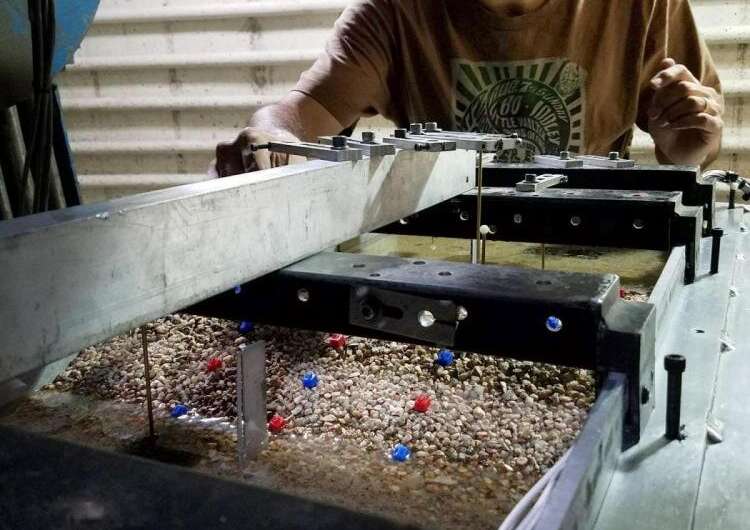#Research into ground improvement technique ahead of earthquakes

“#Research into ground improvement technique ahead of earthquakes”

Juan Carlos Tiznado is the lead author on a new paper in the Journal of Geotechnical and Geoenvironmental Engineering that helps engineers better understand and predict the “liquefaction” hazard during earthquakes and more reliably mitigate it.
Every structure around us rests on soil or rock. In major earthquakes, loose saturated soils that normally behave as solids, such as loose sands below the water table, can transition into a semi-liquid state. That process is known as liquefaction, and factors like the intensity and duration of the quake along with the soil composition in the area play a part in the process.
Liquefaction remains one of the main causes of damage to physical infrastructure during earthquakes and can prevent community lifelines like healthcare, transportation, and power from being immediately restored afterwards, said Tiznado.
“This work focused on a ground improvement technique known as dense granular columns (DGC), which aims at mitigating the effects of soil liquefaction and improves structural performance during strong earthquakes,” he said. “Essentially, we developed the first probabilistic predictive models that help engineers evaluate the probability and expected degree of liquefaction in sites treated with DGCs. With this tool, we can now assess a site for a variety of mitigation scenarios, to help make informed decisions regarding earthquake risk reduction.”
Tiznado added that the work could be particularly useful when planning around important structures like road embankments and dams that are founded on saturated and relatively young (in a geological sense) granular deposits.
Tiznado started as a doctoral candidate in Associate Professor Shideh Dashti’s group in the Department of Civil, Environmental and Architectural Engineering, eventually graduating with a dual Ph.D. from CU Boulder and Pontifical Catholic University of Chile in December 2020. He then served as a postdoctoral researcher under Dashti briefly before taking a faculty position at Pontifical Catholic University, where he works today.
The authors used the geotechnical facility at CU Boulder—which includes three state-of-the-art centrifuges—to complete some of the work. They also benefitted from the super-computing facility (Summit) at CU Boulder to perform the extensive set of numerical simulations presented in this paper.
“In addition to physical and numerical modeling, we collected case histories from previous earthquakes using DGCs to validate our proposed model,” Tiznado said. “Consequently, we used machine learning techniques that helped us optimize the postprocessing of data required to develop our statistical design procedures.”
Dashti said this methodologically integrated approach will, for the first time, enable engineers to reliably evaluate the likelihood of liquefaction in stratigraphically variable liquefiable deposits that are treated with DGCs, contributing to the seismic safety of our critical infrastructure globally.
Report calls for improved methods to assess earthquake-caused soil liquefaction
Juan Carlos Tiznado et al, Probabilistic Predictive Model for Liquefaction Triggering in Layered Sites Improved with Dense Granular Columns, Journal of Geotechnical and Geoenvironmental Engineering (2021). DOI: 10.1061/%28ASCE%29GT.1943-5606.0002609
Citation:
Research into ground improvement technique ahead of earthquakes (2021, December 6)
retrieved 6 December 2021
from https://phys.org/news/2021-12-ground-technique-earthquakes.html
This document is subject to copyright. Apart from any fair dealing for the purpose of private study or research, no
part may be reproduced without the written permission. The content is provided for information purposes only.
If you liked the article, do not forget to share it with your friends. Follow us on Google News too, click on the star and choose us from your favorites.
For forums sites go to Forum.BuradaBiliyorum.Com
If you want to read more Like this articles, you can visit our Science category.



